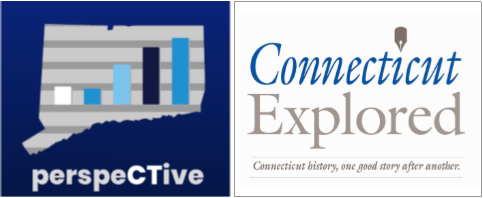The Steadying Habits of Land
/by Sandy Grande, CT Explored
Since the 1800s, Conneticut has been known as “the land of steady habits.”
Historically, this referred to the achievement of political stability and “congressional iety” through the repeated election of men from influential families to political office. For others, it evoked constitutive cronysim, corruption, and the aristocratic leanings of the dominant party. Over time, the motto has come to reference a culture of moral conservatism, valuing tradition over change. At least, thi is the legend that persists.
Whehter fact or fiction, the persistent Connecticut motto suggests an interplay beween human behavior, land, and politics, although, in this relationship, humans are clearly cast in the lead. As a political scientist and indigenous scholar, I wonder: What story would the land tell about Connecticut’s history and politics?
This question currently guides the work of the Tribal Education Initiative (TEI) a collaborative project between the University of Connecticut and the state’s five recognized tribes: the Eastern Pequot, Golden Hill Paugussett, Mashantucket Pequot, Mohegan, and Schaghticoke. The initiative aims to reckon with UConn’s history as a land-grant institution, established partly through the dispossession of Native lands. Moreover, its mandated focus on agriculture and the training of future farmers and scientists promulgated a relationship to land as a resource, a site of research, and a commodity.
By contrast, indigenous peoples view land as a sentient life force unto itself – one that compels the maintenance of strong and abiding relationships with human beings and the rest of nature. The values of relationality and reciprocity are embedded in Indigenous creation stories, languages, cultural practices, and modes of governance. Well-being – and whether individual or political – is perceived as the outcome of good relationships; imbalance leads to dysfunction and harm.
“ I wonder: What story would the land tell about Connecticut’s history and politics?”
The TEI seeks to bring both knowledge systems into conversation. Current academic structures treat land as an object of study, divided among disciplines like geography, environmental science, and agronomy. An indigenous perspective approaches land as a teacher and relational partner. Tribal partners have been working on projects that bring land-based principles – interdependence, inter generationality, reciprocity – into how we think about “study.”
What would it mean, for example, to organize the curriculum not through discrete academic disciplines but by natural cycles, such as the four seasons or the Algonquain calendar of thirteen moons? What if instead of having separate departments of marine science, maritime studies, and marine biology, we had a unified department of water studies? In these scenarios, land and water are recognized for their agency and role as teachers.
While the TEI may attract more Indigenous students to UConn, it also resonates with non-Indigenous students seeking alternative worldviews amid today’s cultural and ecological crises. The future of higher education may lie not in human traditions alone, but in the steadying habits of the land itself.
Sandy Grande is Professor of Political Science and Native American and Indigenous Studies at the University of Connecticut. This first appeared in the Summer issue of CT Explored, and is reprinted here with permission.






























